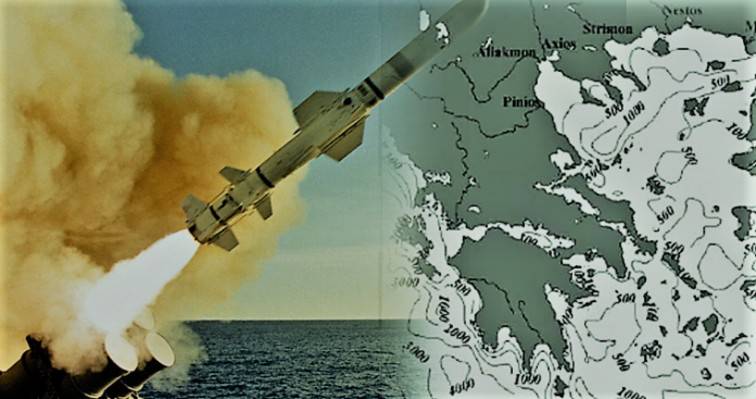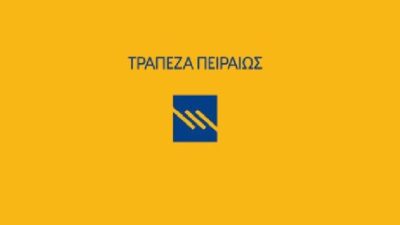Kostas Grivas: The new kind of war or how Greece may miss the train in its conflict with Turkey
09/07/2020
A series of developments in the international geostrategic balance, which in turn bring drastic changes in the art, science, and technology of war, are expected to have a drastic effect on the balances on the Greek-Turkish front and on the role of the Hellenic Army. Some of these changes in the field of military power that have occurred in recent years are the following:
First: The return to classical geostrategic competition, with the proclamation of China and Russia as “revisionist” forces and competitors to the United States. This is stated in the latest paper on the US National Security Strategy, published in December 2017. This fact brings to the fore again the military capabilities of dealing with peer opponents.
At the same time, it is sparking an explosion in the US Army’s efforts to develop methodologies and technologies for conducting conventional military operations against high-tech opponents, which must fill a gap of many years. From 2001 onward, there has been a persistent commitment to military operations other than war (MOOTW) and the development of anti-guerrilla (COIN) capabilities. “We have a 16-year-old problem that we need to address within a year,” said Lt. Gen. Bruce Crawford, a senior G6 officερ.
Second: The return to the armies of the West of “forgotten” combat doctrines, such as the Air- Land Battle (ALB), in order to deal with the armored Russian motorized forces in areas of Central and Northern Europe.
Greek-Russian war theorist Triantaphyllov
Third: In Russia, too, operational doctrines such as Deep Battle and Deep Operations seem to be returning with renewed form. These aim at the rapid advance between gaps of the enemy forces and the attack along the entire width and depth of their deployment. It is worth noting that these methodologies are largely the spiritual child of the Greek-Russian Vladimir Triantaphyllov, a great figure in the theory of war, who for incomprehensible reasons remains almost unknown in Greece.
Combined with hybrid warfare methodologies, these operational perceptions are considered by Western analysts to be aimed at offering Russia the ability to achieve strategically possible results in a short period of time, so as not to activate the nuclear deterrence mechanism. More generally, there is a global trend to create “swift war” capabilities of performing operations under the nuclear threshold, or even below the military threshold in general (below the threshold of military conflict), as the recent paper on the US National Security Strategy characteristically states.
Similar perceptions, dogmas, philosophies and methodologies may be able to find important applications in the peculiar Greek-Turkish confrontation system, where the participation of both countries in NATO limits the possibility of a protracted war.
Multidimensional power projection
Fourth: Russian forces have implemented multi-domain power projection tactics in Ukraine. In this context, electronic warfare tools provide direct information on enemy equipment, both for artillery units, so as to attack enemy forces with sweeping fire, as well as for maneuvering units, in order to advance, avoiding strong points of resistance. .
These developments have prompted the US military to focus on strengthening the cyber-warfare capabilities it has so far neglected, which it is consolidating with operations in cyberspace, shaping a new kind of operational capabilities. These are cyber electromagnetic activities (CEMA).
This combination is part of a broader philosophy for combined action across the whole of the battle space, promoted by the dominant concept of the US Army’s “Multidimensional Battleground” (MDB). The latter seeks to achieve a coupling of skills and collaborative results in all five dimensions of battle (land, sea, air, space and CEMA).
Fifth: The range of artillery systems (multiple rocket launchers and guns) is expanding, while at the same time their abilities to achieve multi-spatial results using warheads of various types (both hard and soft kill) are dramatically increasing. For example, Rheinmetall Denel Munitions (RDM) (German-South African) is developing a 155mm artillery shell of the Assegai ammunition family.
This will be in line with NATO’s JBMOU (Joint Ballistic Memorandum of Understanding) specifications and will reach a range of 70 km. In general, in the new international geostrategic environment, artillery is expected to be called upon several times to carry out a wide range of missions undertaken by air forces in, relatively, limited geographical systems.
The effects on the Greek-Turkish front
These developments come in combination with a series of new givens expected to emerge in the coming years in the Greek-Turkish balance of power. Among other things, radical changes in the geography of power in the Aegean (secondarily along the Evros land border) may lead to weapons systems of sub-strategic importance, which are expected to enter Turkish service in the coming years.
We could mention the combination of long-range ground based air defense systems (GBAD) (including, of course, the S-400, even using 46N6 missiles with a range of 250 km and not the 40N6 with a range of 400 km) with F-35 Lightning II fighters (if Turkey ever receives them) and an expanding family of ballistic missiles of various configurations. It is almost inevitable that these missiles will include anti-ship ASBMs.
The combination of all this will create an area of denial and anti-access in the region (A2 / AD bubble) against the action of the Greek Air Force and the Greek Navy in the Aegean. For example, the F-35 fighter jets, taking advantage of their low-resolution (LO) features and taking advantage of their advanced radar, are likely to be able to “map” the Aegean in real time.
This means that they will be able to target surface units of the Hellenic Navy for strikes with anti-ship ballistic missiles (ASBM), or other weapons systems. This in turn means that the Hellenic Armed Forces will be called upon to operate in an environment where the “combat unity” of the Aegean islands, which was secured by the Hellenic Air Force and Navy, will be called into question.
Thus, the structure of the Hellenic Armed Forces may be divided into independent “mosaics” of battle, which on the one hand should be able to fight separately, and on the other hand can be interconnected operationally, without the help of the Air Force or the Navy. In other words, the Hellenic Army should begin preparing for the eventual need to act independently, exercising power on land, at sea and in the air, without the other two branches of the Armed Forces being able to offer support. .
Upsetting the balance in favor of Turkey
At the same time, new weapons systems, such as armed UAVs, or drones, of various configurations, types and sizes, as well as “loitering munitions”, have entering service with the Turkish Armed Forces in the coming years. The fleet of Turkish T-129 Atak attack helicopter will expand more and more. These helicopters are equipped with Turkish-made missile systems, which include the Turkish-made 2.75-inch (70 mm) Cirit guided rocket. At the same time, the electronic warfare capabilities of the Turkish Armed Forces have been significantly enhanced. These systems are creating new operational givens and the Hellenic Army will have to adapt to their use.
Based on the above, one can conclude that the Hellenic Armed Forces may face unprecedented challenges in the medium term and should be prepared for them. During a first stage, it is vital to monitor international developments in the field of military science and technology. The goal is to design low cost and high payoff domestic solutions, based on international experience, but adapted to Greek conditions.
According to the author, 2020 is a crucial year in terms of shaping the future military balance within the Greek-Turkish system. Greece remains trapped in a policy of inaction in terms of strengthening its military/deterrent capabilities, and when it reacts, it follows outdated notions of power. If this attitude continues, then the Hellenic Armed Forces will find it very difficult in the coming years to bridge the gap created by a linear projection of current trends into the future.





